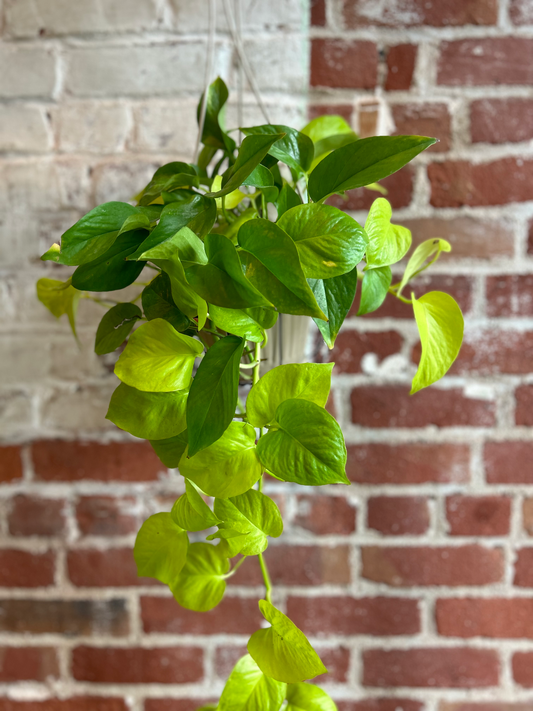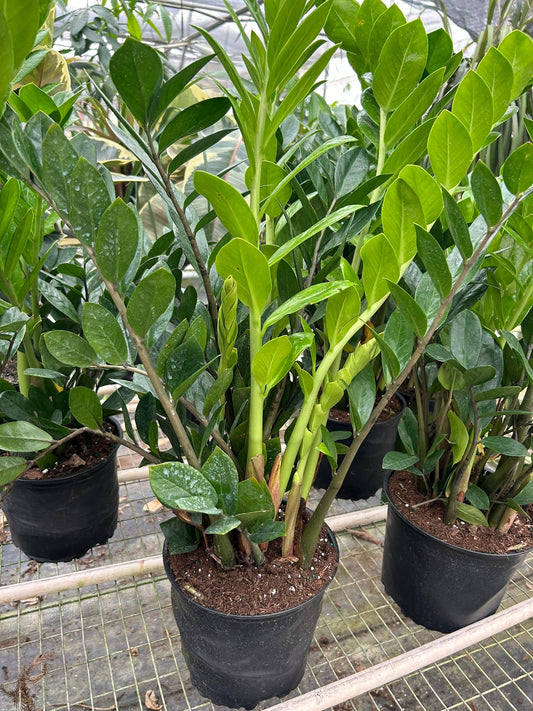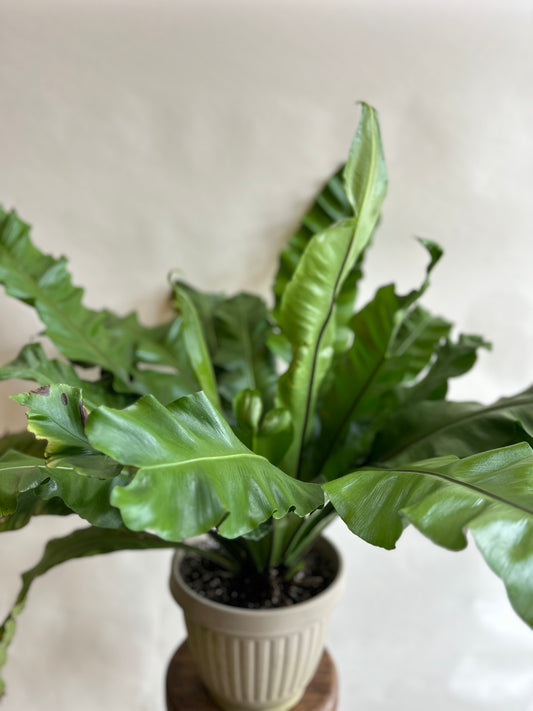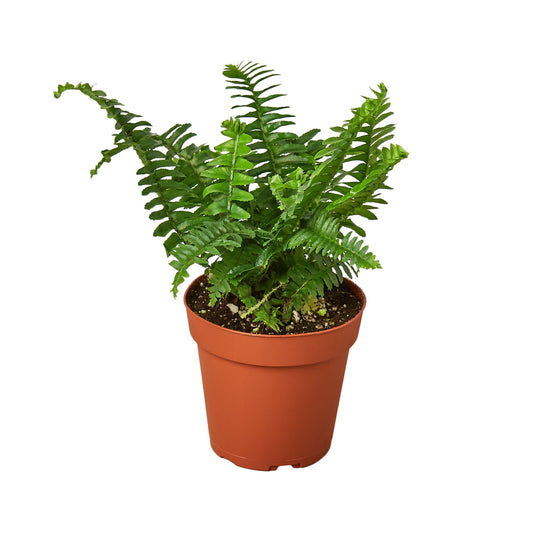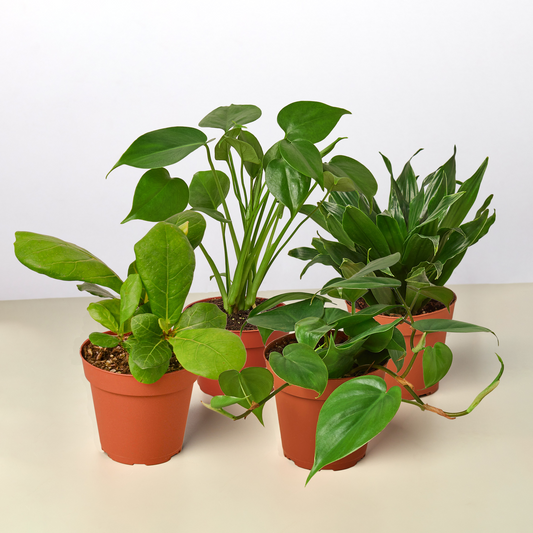How to Grow and Care for Monstera Borsigianas
Cafe Planta Team
Monstera Borsigiana, often confused with its cousin Monstera Deliciosa, is a stunning addition to any home. Its unique split leaves and sprawling growth make it a favorite among plant lovers. Whether you're a seasoned plant parent or just starting your journey, learning how to care for this beauty can be incredibly rewarding.
In this article, we'll cover everything you need to know to grow and care for your Monstera Borsigiana. From choosing the right pot to understanding its light and watering needs, we'll guide you through each step. So, let’s get started on making your Monstera thrive in its new home!
Choosing the Right Spot
Finding the perfect spot for your Monstera Borsigiana can make a world of difference. These plants are native to the tropical forests of Central America, meaning they love a bright, indirect light. But what does that really look like in your home?
A good rule of thumb is to place your Monstera near a window with filtered light. Think of spots where the sun can reach your plant without directly hitting it. South or east-facing windows are typically ideal, as they provide plenty of light without being too harsh. If all you have are west-facing windows, consider using a sheer curtain to soften the intensity.
Interestingly enough, Monsteras are quite adaptable. If your living space doesn’t have a ton of natural light, they can tolerate low-light conditions, though they may not grow as vigorously. Just keep in mind that too little light can lead to smaller leaves and fewer splits.
- East or south-facing windows are preferred.
- Use sheer curtains for west-facing windows to diffuse light.
- Low light is tolerable but may affect growth.
Understanding Watering Needs
Watering can be tricky, but it’s crucial for a healthy Monstera Borsigiana. These plants appreciate a balance between moist and dry. Overwatering is a common mistake that can lead to root rot, while underwatering can cause the leaves to brown and wilt.
A simple way to gauge when to water is to stick your finger about an inch into the soil. If it feels dry, it’s time to water. If it’s still moist, give it a few more days. During the growing season (spring and summer), your Monstera may need watering more frequently, while in the cooler months, you can cut back.
When you water, make sure the excess drains out of the pot. This prevents water from sitting at the bottom, which can suffocate the roots. A pot with drainage holes is non-negotiable for this reason. If your pot doesn't have holes, consider repotting or using it as a cachepot, which means placing a smaller pot with drainage inside it.
- Check soil moisture by sticking a finger in it; water when dry an inch down.
- Adjust watering frequency with season changes.
- Ensure the pot has drainage holes to avoid root rot.
Potting and Soil Selection
Your Monstera Borsigiana will do best in a well-draining soil mix. Think of the kind of soil that mimics its natural environment—light and airy, allowing roots to breathe. A mix of potting soil, perlite, and orchid bark is usually a great combo.
If you're buying a pre-mixed soil, look for those labeled as "tropical" or "aroid" mixes. These should have the right balance of components to keep your Monstera happy. If you're mixing your own, aim for roughly equal parts of potting soil, perlite, and orchid bark.
Repotting is usually needed every couple of years or when the roots start peeking out of the drainage holes. When repotting, choose a pot that's one size larger than the current one. This gives the roots room to grow without overwhelming them with too much space, which can lead to water retention issues.
- Use a mix of potting soil, perlite, and orchid bark.
- Repot every 1-2 years or when roots outgrow the pot.
- Choose a pot one size larger when repotting.
Feeding Your Monstera
Feeding your Monstera Borsigiana is like providing a multi-vitamin to support its growth and health. These plants aren’t too demanding, but they do benefit from a little nourishment during their active growth phase.
Use a balanced, water-soluble fertilizer every month during spring and summer. Diluting the fertilizer to half the recommended strength is a good practice, as too much can burn the roots. In the fall and winter, you can ease up as the plant's growth naturally slows down.
Keep an eye out for signs of nutrient deficiency, like yellowing leaves, which could indicate your Monstera needs a little extra boost. However, these symptoms could also be due to other factors, so it’s important to consider the overall care routine.
- Fertilize monthly in spring and summer with a balanced, water-soluble fertilizer.
- Cut back on fertilizing in fall and winter.
- Watch for yellowing leaves as a sign of nutrient deficiency.
Managing Pests and Problems
Even the most diligent plant parent will encounter pests and problems. Monstera Borsigianas are generally robust, but they can still fall prey to common houseplant pests like spider mites, mealybugs, and aphids.
If you notice any of these unwelcome guests, don’t panic. A simple solution of water and mild dish soap can effectively treat many pest issues. Spray the mixture on the affected areas and gently wipe the leaves with a soft cloth.
Aside from pests, watch out for fungal issues. Brown spots or white powdery patches can indicate a fungal infection. Good airflow, proper watering, and removing affected leaves can help manage this. Sometimes, using a fungicide might be necessary, but always try to improve environmental conditions first.
- Spider mites, mealybugs, and aphids are common pests.
- Use a water and dish soap solution to treat pests.
- Ensure good airflow and proper watering to prevent fungal issues.
Pruning and Propagation
Pruning your Monstera Borsigiana helps maintain its shape and encourages healthy growth. Remove any dead or yellowing leaves to keep your plant looking its best. Pruning can also be a chance to propagate your plant.
To propagate, choose a healthy stem with at least one node and a leaf. Cut it below the node and place it in water or soil. If using water, change it weekly to prevent stagnation. Roots should develop in a few weeks, and once they're a couple of inches long, you can transfer the cutting to soil.
Propagation not only creates new plants but also encourages your main plant to grow fuller. It’s a fun way to multiply your Monstera collection or share with friends!
- Prune dead or yellowing leaves regularly.
- Propagate using a stem with a node and leaf.
- Roots form in a few weeks; transfer to soil when ready.
Styling Your Monstera
Monstera Borsigiana, with its iconic split leaves, can be a striking focal point in your home. Styling it effectively can bring out its natural beauty and complement your interior design.
Consider placing your Monstera on a plant stand to add height and drama. This not only showcases its leaves but also elevates it to eye level, making it more of a statement piece. If your Monstera starts to grow tall, you might want to support it with a moss pole or trellis.
The plant’s lush green leaves pair well with various decor styles, from modern minimalist to bohemian chic. Try placing it next to contrasting colors or textures, like a brick wall or wooden furniture, to create a visually engaging setup.
- Use a plant stand to elevate and showcase your Monstera.
- Support tall growth with a moss pole or trellis.
- Pair with contrasting colors or textures for a dynamic look.
Environmental Considerations
Creating the right environment is key to a thriving Monstera Borsigiana. These plants love humidity, so if you live in a dry area, consider adding a humidifier to your space. Alternatively, misting the leaves or placing the pot on a tray of pebbles and water can help.
Temperature is also important. Monsteras prefer a range between 65°F and 85°F. Avoid placing them near cold drafts or heat sources like radiators, which can stress the plant.
Finally, don't forget about airflow. While they like humidity, stagnant air can lead to issues like mold. Ensure your plant gets a gentle breeze by opening windows or using a fan occasionally.
- Increase humidity with a humidifier or pebble tray.
- Keep temperatures between 65°F and 85°F.
- Provide good airflow to prevent mold and other issues.
Final Thoughts
Growing and caring for a Monstera Borsigiana is a fulfilling experience that brings a touch of the tropics to your home. By understanding its light, water, and soil needs, and keeping an eye out for pests and problems, you can enjoy a healthy and vibrant plant.
At Cafe Planta, we love helping plant lovers like you find the perfect plants and accessories. Whether you're looking for advice or a new addition to your collection, feel free to reach out via email or Instagram. We believe that plants have the power to connect us with nature and each other, and we're here to support your plant journey.


